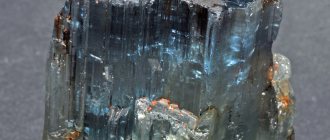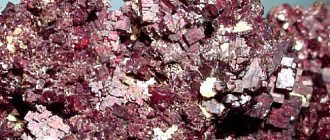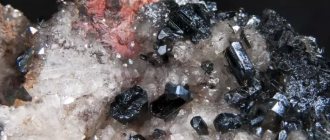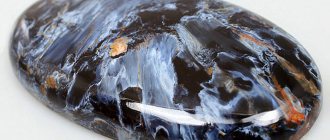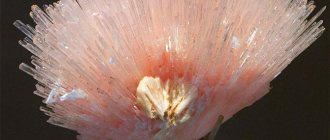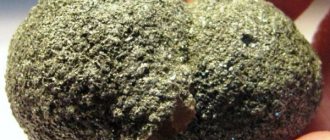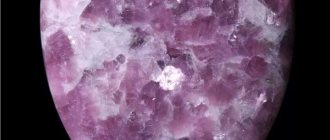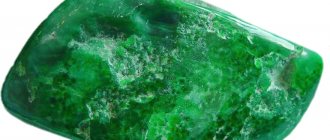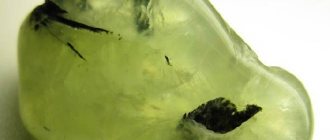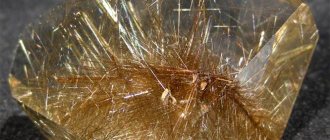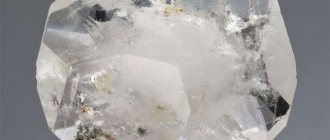The stone also has other names - olivine, chrysolite, although the latter is also considered only one of its varieties. In any case, this mineral is found quite widely. At the same time, the gem is beautiful and has noticeable protective properties. So in different countries of the world it was known under different names.
Place of Birth
Origin
peridot first discovered in Egypt in Alexandria, as well as on the island of Zebargad in the Red Sea. Today, these ancient deposits are considered completely depleted.
Large deposits
— Advertising —
Large deposits of gem-quality peridot have been found in Arizona, Iceland, Norway, Germany, Italy, Congo, Australia, and the Hawaiian Islands. The largest specimens are found in Burma, in Mogok. The supplier of high-quality peridot today is Pakistan.
More recently, peridot was found in meteorites.
Which stones are suitable for Sagittarius men?
Turquoise will be a lucky stone for men. Has the mysterious power to lift the spirit. Wearing this powerful stone implies development and movement towards life goals.
Turquoise allows you to increase prosperity and success, gain wealth, happiness in life. The mineral has some rare healing properties due to its copper content. By wearing this stone you will get relief from throat and mucous membrane problems, infections and breathing problems.
Men can also choose blue zircon, citrine, lapis lazuli, ruby, beryl and topaz.
Story
origin of name
The term "peridot" comes from the Greek word "peridona", which translates as "bringer of abundance". Varieties of this mineral are also known as forsterites, Kashmir peridots, and olivines.
— Advertising —
People have known and loved peridot for its properties since ancient times. Thus, Paracelsus noted that observing the magical shimmer of the green color of the stone is beneficial for vision, and recommended that both healthy and sick people look at this gem daily.
Peridot in Northern Egypt
In Ancient Egypt, peridot was also highly valued, and was mined only at sunrise, since it was believed that during the day in bright sunlight it was almost impossible to notice this crystal. The Arabs mined the mineral on the island of Zebargad and gave it the appropriate name in their language. But all ancient stone deposits are now considered exhausted.
Peridot in Germany
Peridot has been popular for six thousand years, sometimes as a divine stone, sometimes as a devilish stone. Thus, at one time, these gems were used to decorate the inside of the Cologne Cathedral, and later the shine of the stone was recognized as an unacceptable temptation.
Artificial peridot
A large number of chrysolite analogues are entering the market. The list shows common options:
- Polymer imitation. Cheap, rough option. Easily distinguished from a real mineral.
- Glass. Often there are fakes from the island of Ceylon. The local population has started producing cheap analogues of stones. Green bottle glass is placed in the sea in the surf zone. Over the course of several years, the waves wear away the pieces of glass, making them look like polished green gems.
- Nano-peridot. The stones are produced in laboratory conditions from glass ceramics with the addition of chromophores. They have the most vibrant color and even have some of the optical elements of the originals.
How to distinguish from a fake
Fraudsters often pass off fakes as natural gems. In order not to purchase a cheap analogue at the price of the original, you need to adhere to several rules:
- Temperature. When purchasing a mineral, you need to place it on your cheek or squeeze it in your palms for a few seconds. The mineral will remain cold.
- Color. The stones have a uniform color. When examining a glass or plastic craft under a magnifying glass, stains and spots of varying intensity are noticeable.
- Overflow. Peridots always shimmer with a yellow or brownish color. Counterfeits do not have this ability.
- Hardness. If you run a sharp object across glass or plastic, it will leave a scratch. Such an effect will not cause noticeable harm to the gem.
The presence of microcracks in a mineral is not a sign of a fake.
It is problematic to distinguish natural peridot from nano-counterfeits. Therefore, it is better to buy jewelry from sellers who have quality certificates.
About fake stones and how to distinguish them, watch the video review:
Record stone
The most famous example of a large faceted peridot weighing 310 carats is in the Smithsonian Institution (Washington). A yellowish-green specimen weighing 192.75 carats is kept in the Diamond Fund of Russia. A step-cut peridot weighing 146 carats belongs to the Geological Museum in London.
Mining locations
The main deposits of peridot are located in the USA. This stone can also be found in Mexico, Brazil, Russia, Tanzania, Sri Lanka, Afghanistan, Australia, Mongolia and the Atlantic Islands.
In Russia, the mineral is mined from diamond deposits in Yakutia and the Ural Mountains. Samples of the highest quality are found in Kovdor, located in the northern part of the Murmansk region.
Physico-chemical characteristics
According to its chemical composition, peridot (or chrysolite) is a type of olivine, an orthosilicate of iron and magnesium.
Its color is associated with the presence of impurities of nickel, iron and chromium. The most valuable samples are those of pure green color. Yellow hues may also be evident.
The hardness of the mineral on the Mohs scale is 6.5–7. Specific gravity 3.2–4.3 g/cm3. The stone is fragile, with a glassy sheen and a slight “oily” coating, which is its distinctive feature.
Peridot, aka olivine, aka peridot: a stone for good luck
Mineralogy is one of the most ancient sciences. Man's acquaintance with stone began at the dawn of our civilization, when primitive people began to use it as a tool and weapon. Then as a decoration for your body and decorative accessories, in the form of household items. The stone began to attract attention not only for its necessity, but also for its natural beauty, color, transparency and pattern. Our distant ancestors collected unusual stones, carefully stored them, and attributed properties to them based on their own observations and impressions. Thousands of years have passed since then, but the beauty of minerals still evokes delight, admiration and boundless interest.
Mentions of chrysolite are found in the Indian Vedas and in the first Christian books. It was known as a gemstone long before the new era, although it was often confused with other green minerals. In non-scientific literature and among collectors, the name “peridot” is still used to describe the light green demantoid garnet (“Ural emerald”). The mineralogical community will consider this name incorrect, gemologists will object to them: that’s what it was called for many centuries in a row. And what to do if they first named it, and only then determined the composition? This is how unscientific formulations took root: “Saxon peridot” for topaz, “aquamarine peridot” for beryl and “Brazilian peridot” for chrysoberyl.
Chrysolite has always been widely known and popular, which may have prompted traders and miners to deliberately or accidentally distort the names of other minerals in its favor.
In the legends of ancient times, when there was no clear classification of precious stones, even emeralds were mistaken for chrysolite. Chrysolite is an unusual, transparent stone of grassy-golden shades with unique properties. This mineral, emitting the light energy of spring, young grass and the sun, has long attracted people with its charm and incredible attractive power. Color saturation depends on the iron content. In the sun it takes on a golden hue, and in the shade it really looks like an emerald. The yellow tint goes away and pure green remains. Therefore, it is sometimes called the evening emerald.
The comparison to emerald was first attributed to it in ancient Rome. Historians have recorded many facts that when studying some ancient finds with emeralds, the latter actually turned out to be chrysolites.
For example, the chrysolite turned out to be a large green stone polished into a lens, known as the “Emerald of Nero.” Through this lens, like through binoculars, the bloodthirsty emperor watched gladiator fights and admired the glow over burning Rome, which he himself ordered to set on fire. Now the stone is kept “behind seven seals” in the Vatican treasury.
Chrysolite is the oldest name for the stone; it existed before our era and is translated from Greek as “golden stone”.
It is a noble variety of olivine formed due to magmatic crystallization. The bright shine of the stone is due to the high index of double refraction of light. Therefore, when a ray of sunlight hits a stone, it may create the impression of a double image. According to the Mohs hardness scale, the stone has a low value, no more than 6.5-7.0. Density - 3.3 g/cm3. Chemical composition: iron and magnesium orthosilicate. Chemical formula (Mg, Fe)2 SiO4.
Ancient Rome, Ancient Greece, and Ancient Egypt left quite a lot of references to this jewelry stone. There is a legend that peridot (peridot) was the favorite stone of the Egyptian queen Cleopatra. In European countries, the name of the stone is peridot, translated from Greek as “giving abundance.”
The most amazing thing is that peridot crystals are found not only on our planet, but also in the lunar soil; they are even contained in meteorites. Peridot crystals are short-columnar and prismatic, most often found in the form of flattened grains. Thus, in its origin, chrysolite can be not only volcanogenic, but also cosmogenic. It is characteristic of both deep magma and meteorite mass. This fact added mystery and mystery to the stone.
In Egypt, on the island of Zaberget in the Red Sea, there are the very first deposits of chrysolite. Now its largest developments are in the USA (Arizona, New Mexico) and Hawaii. There are deposits of this stone in Mexico, Brazil, Norway, South Africa, India, Burma and Tanzania. In Russia, chrysolites are mined in the Southern Urals, Murmansk region, Buryatia and Krasnoyarsk region.
Worship of rare, unusual stones is found in almost all peoples of the world. Shamans, sorcerers, and priests were the first to pay attention to the connection between man and stone. Random coincidences were filtered out through the filter of millennia and disappeared into oblivion. Only “working”, significant connections remained, firmly imprinted in the memory of mankind.
The first thing that immediately catches the eye of a natural scientist today is the dependence of the magical properties of the stone on the color and its intensity. Green, red, purple and blue stones have the most powerful effect on humans.
Scientists have found that the color of minerals is associated with the inclusion in its crystal lattice of ions, elements that can give up electrons with little external influence. As a result, structural disturbances occur in the crystal. Our little treasure “breathes”, lives its own inner life. Its external manifestations constitute a set of qualities that are traditionally called magical. Impurities of some metals have a particularly intense effect on the energy of the crystal. These are primarily iron, copper, manganese, chromium and lithium.
Transparent stones are capable of synchronously emitting light from the entire volume of the crystal in the form of a concentrated beam. This is laser radiation. The laser beam is invisible, it consists of waves that penetrate deeply into living tissue. It is likely that laser effects may be the source of many of the magical properties of stones.
To understand all this, you need to write a separate book and more than one. You need to have astrological and scientific knowledge, know the history of the ancient world and be able to recognize stones - in order to compare all the facts and provide accurate information on the influence of stones on human psychology. One thing has been reliably proven, and modern medicine takes into account this opinion, that if faith in amulets and talismans helps, then it must be strengthened. But faith, you know, is voluntary. And if you still have an interest in green, sunny chrysolite, which contains iron in its structure and has the ability to refract light twice, then from the next red line you will learn about its effect on humans, magical and medicinal properties obtained from the Internet by searching and with an eye to the credibility of the texts.
Since ancient times, people believed that the Sun endowed Chrysolite with a special powerful force that could protect against the influence of evil spirits, the evil eye and damage. It differed from other minerals in its strong energy. Ancient magicians wore amulets made of this stone, framing it in gold, which increased its magical power and capabilities. He helped them unravel the mysteries of the future and predict fate.
Traders in Ancient India carried it with them, considering peridot a stone of luck and good fortune. Businessmen of those times: merchants and merchants, were confident that the stone would help in concluding profitable deals and contracts, eliminate risk in financial transactions, and also help make profitable investments. They wore it without taking it off, as a talisman against all kinds of accidents, thefts and fires.
In the Middle Ages, peridot was a symbol of inspiration, as it was believed that the mineral had the ability to influence the creative abilities of the owner. In the 60s of the 19th century, the popularity of stone in France reached its apogee. Jewelry with peridot was held in high esteem not only for its extraordinary beauty and transparent golden hue. It was believed that the stone was a talisman that helped its owner resist temptations and protect him from rash actions. Thanks to its strong energy, peridot was revered by Catholic bishops; they still wear a ring with this stone as a symbol of spirituality, high morality and purity.
It is believed that chrysolite helps in all endeavors. Protects a person’s aura from any negative influence. If you give a stone figurine to newlyweds, they will be guaranteed a long and happy life, without quarrels and scandals. Peridot figurines and jewelry are given for wedding anniversaries, birthdays, and just for special occasions. A gifted stone has more power than one purchased independently. Jewelry with chrysolite is presented to young girls so that they can successfully arrange their destiny. Those who are constantly in sight are advised to always carry a peridot stone, earrings, necklace or ring (on the left hand) with them; it will protect its owner from envy and malice.
Astrologers believe that the stone’s properties are suitable for literally everyone. But chrysolite has some peculiarity; it is believed that this stone is monogamous. Once accustomed to a person, he reluctantly serves another, while trying not to get noticed or simply get lost. Therefore, purchasing jewelry with chrysolites at a pawnshop is not the best option.
The healing properties of the stone were discovered by the ancient Armenians; it was their healers who claimed that by gazing for a long time at the magical greenery of peridot, one could significantly improve one’s vision. One way or another, the color green has a beneficial effect on the heart, nervous system, and relieves mental stress. Motivates a person to overcome depression, become more active and relaxed.
I offer several photographs with jewelry made from this wonderful stone to check for yourself how true the statements of ancient healers were about the beneficial effects of chrysolite on humans.
It does not take a lot of time.
Enjoy watching 
If the publication captivated you a little and seemed useful to you, click “like” and “add to favorites.”
Thank you for your attention!
Best wishes 
Types of stone
The following subspecies of peridot are distinguished:
Star Peridot
A very rare stone with a pronounced cat's eye effect, as its opaque surface allows for color diffusion.
Peridot Mesa
It is mined by Apache Indians in San Carlos, by hand. These are individual grains, with sizes ranging from 5 to 13 mm.
What is the difference from a fake
Quite often they try to pass off glass and plastic as peridot on the stone market. They are pre-prepared, trying to give the most similar appearance. To do this, fragments of artificial material are placed in the surf zone for several years. During this period, the waves polish the surface of the glass to such an extent that it is quite difficult for an inexperienced buyer to distinguish them from real peridot.
If you look closely at real chrysolite, you will notice its following distinctive features:
- The color of the natural mineral is uniform in yellow-green shades;
- in fake stone there is no transparency, as well as transmission capacity and the effect of refraction of rays;
- large crystals of real chrysolite are quite rare, and accordingly their cost is quite high;
- on the plastic imitation, unlike a natural gem, there is a mark left by the needle in the form of a scratch;
- The natural mineral is heavy and cool to the touch.
Sometimes they try to pass off cheaper minerals as chrysolite - chrysoberyl, colored cubic zirconia or spinel. Despite their naturalness and similar appearance, these stones do not have the properties and energy of chrysolite.
Magic properties
The magical abilities of peridot are increased many times over if the stone is set in gold or placed on a gold stand.
People noted this pattern back in the Middle Ages. Then it was widely used to establish contacts with spirits and develop psychic abilities. At the same time, peridot never became an assistant for dark magicians and sorcerers. It is believed that initially this gem did not distinguish between good and evil, and could help any person achieve any of his desires by any possible means. However, as a result of long-term communication and interaction with humanity, the Peridots “learned” to understand the plans of their owner, and since then they have been helping only good people.
Moreover, it is believed that a peridot talisman set in gold can even ward off dark magic. Even the very presence of this mineral brings light and goodness. Peridot-based amulets have powerful protective properties for their owners and their homes, protecting them from troubles, the influence of evil people and the elements.
Features of mineral care
Ring with chrysolite
A characteristic feature of chrysolite is that the stone has low hardness and is quite fragile. As a result, it is necessary to wear items with it as carefully as possible, because the gem can be easily and quickly scratched or chipped. Jewelers advise protecting peridot from acids and cleaning it exclusively in soapy water.
The gem is sensitive to overheating and sudden temperature changes, so it is strictly not recommended to leave it near heating devices. Peridot also does not tolerate direct sunlight well; with prolonged exposure it can fade.
Store the stone separately from metal objects and harder minerals (for example, diamonds and beryl). To do this, use a box with soft inner upholstery or a case.
Medicinal properties
Jewelry with peridot helps in the treatment of bronchopulmonary diseases, accelerates their course and promotes recovery.
They even help with bronchial asthma. Peridot also activates the nervous activity of the body and optimizes relationships in the body. Simply looking at this gem helps normalize a person’s emotional state and relieves irritability and anger. And in ancient times it was believed that it helps improve vision.
Which stones are suitable for November Sagittarius?
Yellow topaz
Imperial or golden topaz was once considered the most luxurious of topaz, as it was widely used as a symbol of wealth and nobility.
Suitable for Sagittarius who want to turn their goals into reality. Strengthens personal will.
Love and affection are the virtues symbolized by this beautiful November birthstone. Symbolizes the promise of eternal love and fidelity. Additionally, legend says that a person who wears topaz jewelry will be blessed with the gifts of intelligence and strength.
This is one of the most powerful crystals for enhancing and manifesting love and luck.
Citrine
Citrine is famous for its gorgeous gold tones. Color ranges from soft pale yellow to bright reddish brown. The word "citrine" comes from the Latin word meaning "lemon."
Gives the owner an abundance of vitality and positive energy. This stone has been praised for centuries for its ability to clear negative energies and enhance happy and healing vibrations.
Citrine is suitable for Sagittarius, strengthens the already positive power of the sign, supports good spirits and childish joy. Crystal promotes prosperity. To attract money, it is good to keep it in your wallet.
Citrine was wildly popular during the Victorian era. Queen Victoria herself loved to add elements of citrine to her world-famous collection of royal jewelry.
The color of November is a charming yellow-gold. It can appear across a spectrum of warm colors from pale yellow to blazing sunset orange.
The color yellow symbolizes happiness, freedom and hope. Orange is associated with vitality, enthusiasm, excitement and warmth. Gold is the color of prosperity and luxury.
Therefore, in November, you can also use any yellow and orange stones that you like.
Applications
Peridot is widely used in jewelry as a relatively inexpensive and at the same time beautiful and exquisite gemstone.
Its specimens are distinguished by high purity, absence of defects, and are easy to process. Peridot inserts are used in all kinds of jewelry. In addition, the stone is also used as an ornamental stone - for making souvenirs and interior decorations.
How to use a talisman stone correctly?
Peridot is most often used to make jewelry . It should be carried with you in the form of amulets, rings, earrings, necklaces, and not combined with other minerals. The stone has acceptable compatibility with cubic zirconia, amethyst, topaz, citrine, and pearls. Silver and artistic enamel are best suited for frames.
To ensure that the power of the stone does not fade, and its appearance pleases the owner for a long time, it is necessary to follow the basic rules of caring for it:
- avoid serious mechanical damage, falls, impacts; the mineral, despite its hardness, can break;
- Do not clean with aggressive chemicals; use soapy water and a soft cloth for cleaning;
- Store separately from other jewelry.
A stone, which the owner carefully looks after, will faithfully serve its owner faithfully for many years, fully demonstrating its magical abilities.
Peridot and zodiac sign
Peridot provides the most powerful assistance to Pisces women and Leo men. The influence of this gem especially affects the personal life of the owner, it harmonizes it, brings sincere mutual love and happiness. Regardless of zodiac signs, astrologers advise that in the first year of marriage, all partners give each other jewelry with peridots, as a guarantee of a long and happy family life.
History and legends about the stone
Olivine-peridot
The history of peridot dates back more than 6,000 years. The stone is written about in the Bible and in Josephus’s work “Antiquities of the Jews.” Jewelry with it was especially revered in the countries of North Africa and the Middle East.
In the Middle Ages, peridot was a symbol of inspiration, as it was believed that the mineral had the power to influence the creative abilities of the owner. Residents of Ancient India believed that a talisman with chrysolite could facilitate communication with the opposite sex. Merchants and traders tried not to part with the gem in order to protect their goods from unkind people, as well as to increase their capital.
Product prices
Natural cabochon-cut peridot can be purchased from $2 to $5 per carat. A silver ring with this stone is estimated at $10 to $30. Peridots are often used together with other precious stones and in gold settings, which increases the price of finished products.
Origin
The times of the past era are considered to be the time of the relative origin of the stone. Even on the biblical pages and philosophical manuscripts it was discussed. Crusaders and monks often used its magical, healing properties.
In terms of its external characteristics, peridot resembles olivine, which is explained by the fact that this type of stone is one of its varieties. Peridot is much more expensive than olivine and is much less common compared to this representative. This igneous mineral and garnet are almost on the same level in popularity and cost.
Interesting Facts
- Jewelers often treat peridot samples with colorless oils, waxes, natural or synthetic resins without adding hardeners under vacuum. All these procedures help improve the appearance of the stone. Cracks on its surface are filled with colorless substances with the addition of hardeners. After this, the stone becomes especially durable and strong.
- Peridot itself is practically not counterfeited, since it is widespread and inexpensive. But on its basis, reliable imitations of expensive emeralds are often made.
How to spot a fake
Although the price of olivine stone is not too high, it is still counterfeited. Fraudsters like to imitate a crystal using glass or plastic. It is quite easy not to fall for their tricks.
Only natural stones have healing and magical properties.
- Peridot is a fairly durable and hard gem. A conscientious seller himself may suggest that you check it for these qualities. Try scratching the mineral with a needle or running it across the glass. A natural specimen cannot be damaged, but it will leave scratches on the shiny surface.
- Pay attention to the color scheme of the crystal. The color of genuine peridot is quite uniform. Uneven coloring with streaks is a sign of a fake.
- Check the stone for thermal conductivity properties. Just squeeze it in your fist. A piece of glass will quickly heat up from body temperature. Mineral - no.
When buying jewelry, you should remember the most important thing. Only genuine specimens have the healing and magical properties of peridot stone. It will not be possible to make a talisman out of glass.
Gemology[edit]
The refractive indices of faceted gemstones contain indices α = 1.653, β = 1.670 and γ = 1.689 with a corresponding biaxial birefringence of 0.036. Study of Chinese peridot samples determined a hydrostatic specific gravity of 3.36. Visible light spectroscopy of the same Chinese peridot samples showed light bands between 493.0 and 481.0 nm, with the strongest absorption at 492.0 nm. [9]
Inclusions are common in peridot crystals, but their variety depends on where they are found. The stones from Pakistan contain inclusions of silk and rods, as well as inclusions of black chromite crystals surrounded by bi-circular cleavage discs resembling lily petals and fingerprint inclusions. Brown mica flakes are more noticeable in Arizona gemstones. [9]
The largest cut of peridot olivine is a 310-carat (62-gram) specimen at the Smithsonian Museum in Washington, DC.
What stones are suitable for Sagittarius women?
Women of this zodiac sign are usually adventurous, friendly, and fun-loving. But sometimes the element of fire provokes them, so amethyst, blue sapphire and blue topaz are suitable for them.
Blue topaz helps Sagittarius girls balance emotions and increases self-confidence. Grants wisdom, inner peace and mental stability. Helps in finding new opportunities, the right path in life.
It is better to wear blue topaz on the index finger of your right hand to enjoy a healthy and stress-free life.
Blue sapphire protects against negative thoughts and gives courage to face difficult situations.
Ruby, turquoise, and citrine are also suitable for Sagittarius women.
